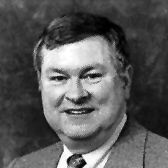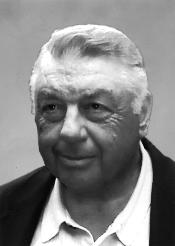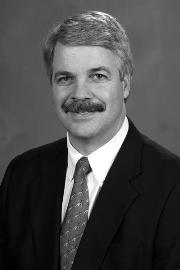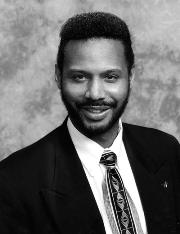2004 Outstanding Aerospace Engineer awards

BRADLEY D. BELCHERLead Experimental Engineer, Joint Strike Fighter F-136 Engine Program ~ Rolls-Royce Corporation "The pursuit of engineering, particularly aeronautical and astronautical engineering is a passion you are born with. In this profession you use knowledge, judgment, planning, and discipline to do remarkable things that have never been done before, or existing things better. In this pursuit you work with many talented and dedicated people. Also in this pursuit you carry an obligation to guide and mentor your younger colleagues that will some day succeed you, build on your accomplishments, and hopefully learn from your mistakes! You do this in honor of those that guided you. There is much to be done, and we have really just started." Bradley D. Belcher (B.S.A.A.E. '82) is the Lead Experimental Engineer, Joint Strike Fighter F 136 Engine Program for Rolls-Royce Corporation. He coordinates assembly, instrumentation and test (AIT) and systems integration efforts for Rolls-Royce's first JSF F 136 turbofan engines. Mr. Belcher began his career in 1982 at Detroit Diesel Allison, GM, and in 1998, he became the IPT leader of JSF 120 Core Engine Development at Allison Advanced Development Company, a subsidiary of Rolls-Royce, and in 2001 he came to occupy the position of the Lead Experiment Engineer, JSF 136 Engine Program at Rolls Royce, which he continues to hold to this day. He has two patents. Mr. Belcher, a founding and current member of the Purdue AAE Industry Advisory Council, has made a long and significant contribution to Purdue University. He has also been a member of the Board of Directors of the Purdue Engineering Alumni Association for the past twelve years, out of which he has served as its president for two years. |

JOHN T. BETTSTechnical Fellow ~ The Boeing Company "The most challenging aspect of technical research and development is problem formulation. Analytical skills provide the means to translate an abstract concept into a useful result. My analytical and mathematical skills were dramatically enhanced by my educational experience at Purdue. I fully expect this tradition of excellence will continue with future Purdue graduates." John T. Betts (M.S.A.A.E '67, Ph.D. '70) is finely skilled in methods of aerospace trajectory optimization, guidance, and control, and he is also responsible for the Optimization Software library, the Sparse Optimal Control Software, and the optimization software in the BCSLIB mathematical library. Dr. Betts has been a principle developer of a sparse sequential quadratic programming (SQP) algorithm based on a Schur-complement method, and a primal-dual interior point (barrier) algorithm, for constrained optimization. From 1977 to 1987, Dr. Betts held the position of the Manager of the Optimization Techniques Section at the Aerospace Corporation, and in 1987 he was appointed the Manager of Operations Research at The Boeing Company. From 1989 to 2002 he was an Associate Technical Fellow at the Boeing Company. Dr. Betts has written one book, thirty-eight journal articles, and over a hundred technical reports. He has organized five mini-symposia and one conference. |

LLOYD E. HACKMANRetired, President and Chairman ~ Ribbon Technology Corporation "My engineering career has been an adventure, not a job. My chance to do a senior research project under Professor Bruhn and two years as a lieutenant in the Air Force Research and Development Command gave me the confidence to be at the forefront of new developments throughout my career. My engineering education gave the ability to think, reason, and be a problem solver. The ability to solve problems logically is an asset in any business or career." Lloyd E. Hackman (B.S.A.E.'52) began his career at North American Aviation, Inc., in Columbus, Ohio. After a period of three months he entered the service as a Second Lieutenant with the United States Air Force. On being discharged two years later, he returned to North American Aviation, where for the next ten years he was assigned to projects relating to the optimization of honey comb structures, creep studies, and extension of thermal stress programs, as a part of the Research and Development Group. Mr. Hackman worked as an independent consultant from 1970 to 1975 and led a group of investors to establish Ribbon Technology Corporation in 1972. He took over the Chairmanship and Presidency of Ribtec in 1975. After retirement in 1997, he immersed himself in Perfected Golf Group, organized to use the Patent for the Golf Club Fitting System that was issued in 1994. Mr. Hackman has been recognized for his achievements as Central Ohio Small Business Person of the Year 1985, Ohio Small Business Person of the Year 1986, National Small Business Exporter of the Year 1987, Entrepreneur of the Year Finalist 1989, and Inventor of the Year 1991. Mr. Hackman has published thirty-four papers in various fields and contributed a chapter to Analysis and Design of Aircraft Structures by Elmer F. Bruhn. He currently holds twenty-one patents. |

ANNA-MARIA R. McGOWANProject Manager ~ NASA "An engineering education offers a world of opportunities: you can explore, invent, discover, solve, test, design, create, lead, and manage. I chose aerospace because of my fascination with airplanes and flight. During my career I have thoroughly enjoyed being faced with everevolving challenges and the opportunity to learn and be a part of something revolutionary. I have also learned that sharpening your non-technical skills—such as communication and interpersonal skills—is equally important in having a successful career." Anna-Maria R. McGowan (B.S.A.A.E. '92) is the Project Manager of the Actively Tailored High Lift Systems Project in National Aeronautics and Space Administration. She began her career at NASA as a co-operative education student while at Purdue. In 2000, Ms. McGowan was appointed manager of NASA's Morphing Project. This visionary $35 million per year project involved over 90 researchers and many external collaborators to develop and assess advanced technologies to enable efficient, multi-point adaptability (morphing) in future flight vehicles; primarily through the use of micro active flow control and adaptive structures and materials. In her current project, Ms. McGowan is overseeing the development and demonstration of innovative high lift and aeroelastic technologies for short take off and landing regional jets and supersonic business jets. A recipient of the American Institute of Aeronautics and Astronautics Sperry Award, Ms. McGowan has also earned numerous NASA awards and been heavily involved in national and local educational outreach programs. |

TERRENCE H. MURPHYDivision Director of Space Power and Energy Systems ~ The Boeing Company "The engineering education I received at Purdue provided the necessary core disciplines to fulfill my lifelong dream of being a valuable asset to the United States space program. I've learned many lessons over the last twenty five years at Rocketdyne, but the most important has been teamwork. Great engineering achievement requires thousands of people and many years to complete, so diversity of thought, cooperation, and resiliency are key traits for program success." Terrence H. Murphy (B.S.A.A.E. '80) manages the space power and terrestrial energy system development activities at Rocketdyne, a division of the Boeing Company in Canoga Park, California. His space power activities include the co-design and development of a revolutionary JPL spacecraft powered by a nuclear fission reactor. In the past two years, his organization has generated over forty patents related to leveraging aerospace technologies into clean and renewable terrestrial energy projects. As a Director in Advanced Programs, he formulated the design of the RS-68 booster engine for the Boeing Delta IV launch vehicle and brought about several international teaming agreements for cooperative engine development. Mr. Murphy has received numerous awards including the Distinguished Engineering Achievement Award, NASA Silver Snoopy Award, and was a NASA Stellar Nominee. |

DAVID A. SPENCERMission Manager, Deep Impact Project ~ Jet Propulsion Laboratory "Over the next two decades, we are poised to find Earth-sized planets orbiting distant stars, discover life beyond Earth, and to send astronauts to explore Mars. Purdue University is positioned to continue the tradition of producing the engineering leadership for the exploration of space." David A. Spencer (B.S.A.A.E. '89, M.S.A.A.E. '91) is currently leading the mission operations and ground data system development for the Deep Impact project, for which he has also developed the flight team organization, established interfaces, evaluated mission risks and established contingency plans. On leaving Purdue University in 1991, Mr. Spencer worked with the TOPEX/POSEIDON mission design team to develop the mission plan and establish repeating ground track orbit design. In 1994, Mr. Spencer was appointed as the mission designer for Mars Pathfinder, where he worked on the interplanetary and atmospheric entry trajectories. He was responsible for producing a Monte Carlo simulation for computing trajectory dispersions based on uncertainties in atmospheric and entry conditions. In 1997, Mr. Spencer became the mission manager for Mars '01 and led the development of the mission plan and navigation strategies for orbiter and lander missions. He was the deputy manager for JPL's Flight System section between 2002 and 2004. Mr. Spencer received the NASA Exceptional Service Medal, 2003; NASA Exceptional Achievement, 1998; and JPL Award for Excellence, 1999 and 1998. |

ANTHONY L. THORNTONDeputy Director, Joint Strike Fighter New Initiatives ~ Lockheed Martin Aeronautics "The engineering knowledge one gains at a university and throughout one's career should be used to better our world, to protect and improve upon our way of life, and to benefit others. Engineering is a noble profession—one whose sole purpose is to serve our society. Our greatest leaders are servants; and engineers, through their accomplishments, have the ability to touch, influence, and serve the largest number of people in our society. I am proud to be a member of this exciting profession." Anthony L. Thornton (Ph.D. '92) is the Deputy Director for the Joint Strike Fighter (JSF) New Initiatives office at Lockheed Martin Aeronautics (LM Aero) in Fort Worth, Texas. He started his career at Sandia National Laboratories in Albuquerque (SNLA), New Mexico as a research engineer in aerothermodynamics supporting Strategic Defense Initiative projects. In 1994 he became SNLA's first African American Director responsible for a model diversity leadership program, involving issues in equal employment opportunity, cultural change, organizational development efforts, community partnering, strategic planning, and affirmative action compliance law. In 1997, Dr. Thornton transferred to Lockheed Martin Skunk Works in Palmdale, California. He played a key role on the Transition Project Team during the second quarter of 2000, supporting LM Aero's three-company transition/consolidation activity. Following that assignment, he was promoted to Senior Manager of strategy deployment during the fall of 2000. In April 2001, he served as Deputy Program Director, Fort Worth Operations, for the Korea T-50 Program to support South Korea's efforts to develop a modern military supersonic trainer aircraft. Dr. Thornton has received numerous awards, including the Distinguished Engineering Achievement Award 2000 from the Engineer's Council, Inc. in Woodland Hills, California, as well as being the national recipient of the 2001 Black Engineer of the Year Award in Professional Achievement. |

CHRIS G. WHIPPLEPrincipal ~ Environ International Corp. "I showed up at Purdue not having any strong sense of what I wanted to do," Chris Whipple says, "and that sort of remains true—I like to think that I've had a really good time by never choosing a major." Eventually, Whipple did choose a major after taking a freshman seminar that covered the different disciplines for incoming Purdue engineers. "It's really classical physics when you get right down to it," he says of engineering science, his eventual focus of study while at Purdue. This broadly focused training has taken Whipple through a PhD at the California Institute of Technology, to the chairmanship of the National Academy of Sciences Committee for the Hanford Site, to the Yucca Mountain Project as a technical consultant, and to authorship of more than 150 publications and presentations. Whipple's career has spanned 30 years doing risk assessment and environmental analyses, gauging the risks associated with energy production, fuel emissions, and radioactive wastes. He was on the National Academy's Committee on Radioactive Waste with the U.S.S.R. and has worked with the Swedish Radiation Protection Institute and for the U.S. Department of Energy, among others. These days he is a principal in Environ International's Emeryville, California, office. "I don't know when I got over believing that there'd be some point at which I knew what I wanted to be when I grew up," Whipple says, "but I'm over it." |

THOMAS L. WILLIAMSSector Vice President, Program Integration ~ Northrop Grumman Corporation "I have been extremely blessed with supportive and understanding family, friends, and work associates throughout my 30-year career in aerospace. Looking back I could never imagine that my decision to attend an engineering university in a small town in central Indiana and to pursue a career as a commercial pilot would have opened the gate to so many challenges and a rich and rewarding career. When I ask what made it go by so quickly three words come to mind: fun, job diversity, and challenge. When I ask myself what has enriched my life and career, a single word comes to mind: people; people I have had the honor of working with and collaborating with." Thomas L. Williams (B.S.A.A.E '75, M.S.A.A.E. '76) is currently the Sector Vice President for Program Integration at Northrop Grumman Corporation's Integrated Systems sector. Global Hawk, Fire Scout, B-2, F/A- 18, E-2 Hawkeye and JSTRARS are some of the systems that comprise the Integrated Systems product portfolio. His prior responsibilities include having served as the Program Manager for the B-2 Stealth Bomber; acting as the Vice President for Airborne Early Warning and Control systems; and serving as the Vice President for Engineering, Logistics and Technology. Mr. Williams is a member of the National Academy of Sciences, and is the Vice Chairman of the Board of Software Productivity Consortium (SPC). He has received Service and Recognition Awards from the National Defense Industry Association and the America Institute of Aeronautics and Astronautics. |
